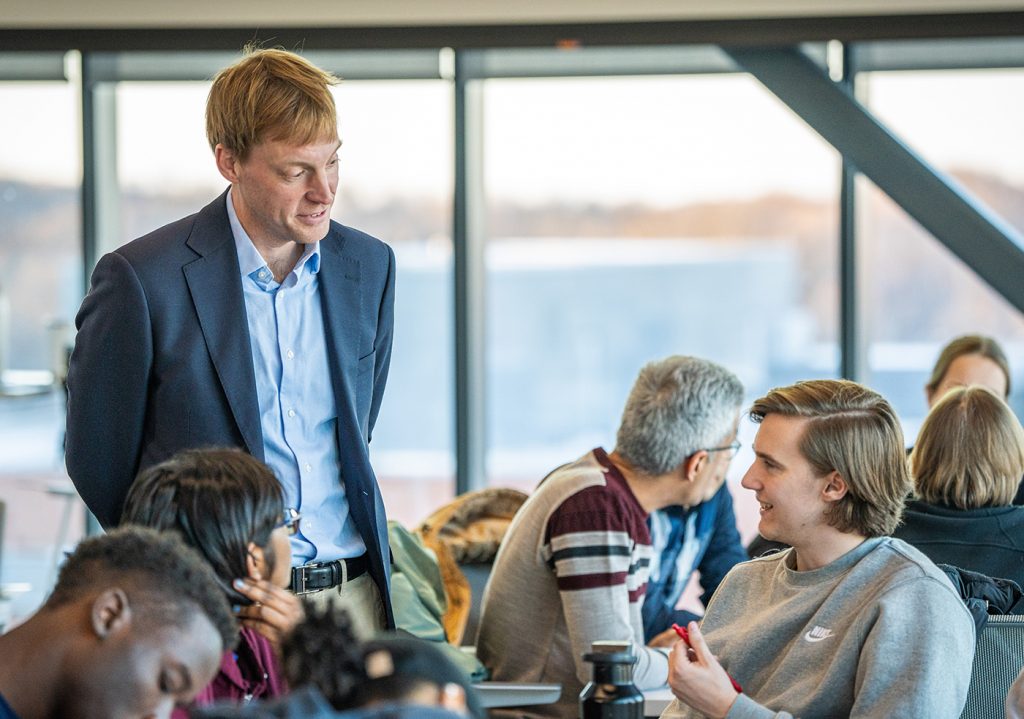
Associate Professor Abram Anders talks with students at an applied AI challenge
Photo provided by Abram Anders
Abram Anders, Associate Professor of English and Associate Director of the Student Innovation Center, finds that “good readers, good writers, and good thinkers are some of the best equipped students to do great with AI.” Anders has had ample opportunity to observe students developing their problem-solving skills in his course Artificial Intelligence and Writing (English 2220). The course, which attracts students from majors across the university, encourages students to experiment with AI during structured problem-solving activities. Anders is among the faculty on campus who have contributed to defining an AI minor consisting of courses that jointly build students’ cross-disciplinary knowledge of AI to prepare them for their future lives.
Students of all disciplines are welcome to participate in Anders’ course and select from other classes to earn the minor. He explains, “The idea of the [AI] minor is that we have some core courses that students in any discipline can take to learn a little about how to work with AI from a low-code or no-code perspective.” Dr. Anders continues, “It’s letting every major in college do their own thing, but also helping it to add up to something a little more than the sum of its parts.” Some may assume there is no added benefit to a student using AI. There is a common misconception that students are not engaging their thoughts, ideas, and critical thinking to complete a task or assignment if they are using AI. While Dr. Anders admits this can happen, he points out the overlooked partnership bonuses between students and AI, especially if students have learned how to negotiate a beneficial partnership with AI in their courses.
Research processes like a Google search often train the individual to assume the first source is the best. Anders argues that AI allows students to dig deeper into source material. Prompted by their knowledge that AI can deliver incorrect information, students continuously examine credibility and content quality. Anders notes, “They always plan, they bring in information, they expect to go back and forth and have a dialogue and challenge it and have it challenge them and always evaluate the result.” Students may find that AI can aid in structuring their notes for basic outlines, fusing components of a project, and clarifying the message they are communicating.

Photo by Kelsey Vargason
Students interested in AI exposure and experimentation can unleash their passions in the Student Innovation Center, where Anders hosts workshops and events for students from all disciplines. Among the events are the applied AI challenges with teams of students using their shared interests to solve a problem. Students with minimal to no coding experience are invited to participate. Anders observes the role of strong literacy and communication skills for the teamwork involved in writing with AI tools. There is a necessary human component of idea generation, planning, and communication that allows for successful AI results.
Beyond student-led exploration, Anders has personal hopes for AI. The ability to aid individuals in cultivating healthy habits, developing learning plans, and making overall improved lifestyle changes via AI excites him. He explains, “I want to be a part of making sure we get more of the good and less of the bad.” This desire for good has allowed Anders to create a space for students to do the same, allowing a whole new arena of innovation to be erected.
